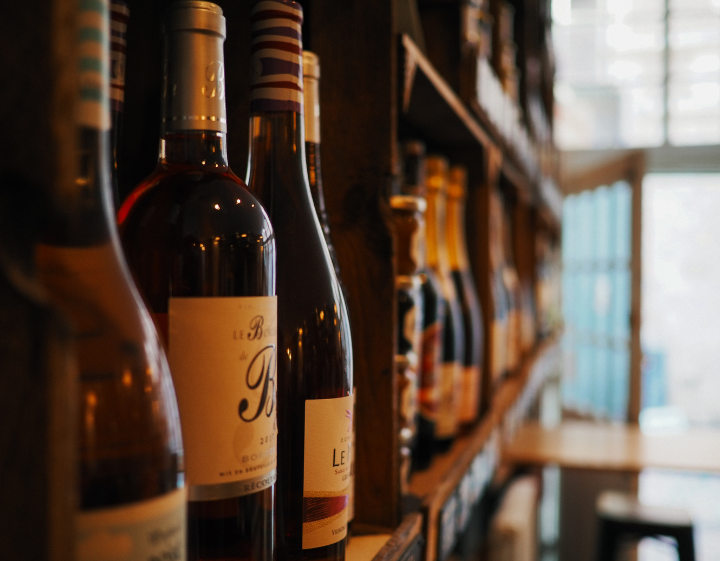Introduction
The phrase ‘aging like fine wine’ captures the beautiful transformation that happens in an aging bottle of wine. Aging wine is a practice that has been around for centuries and holds significant historical importance in the world of winemaking. As a bottle of wine ages, its taste and quality often improve, making it a highly sought-after commodity among wine enthusiasts
The concept of aging wine can be traced back to ancient times, where it was believed that allowing wine to mature enhanced its flavor and made it more enjoyable to consume. Throughout history, different cultures and regions have adopted varying methods of aging wine, resulting in a wide variety of styles and flavors.
The process of aging wine involves storing it in suitable conditions, usually in a cellar or wine cave, where it can undergo chemical reactions that enhance its taste and aroma. Over time, the tannins in the wine soften, leading to a smoother and more balanced flavor profile. Additionally, the interaction between the wine and the oxygen present inside the bottle allows for the development of complex aromas and flavors.
Not all wines are suitable for aging, as certain characteristics are necessary for a wine to improve with time. Wines with high acidity, tannins, and sugar content tend to age well, as these components contribute to the wine’s ability to evolve and develop over the years. However, delicate and light-bodied wines are typically meant to be consumed in their youth, as they may lose their vibrancy and freshness with prolonged aging.
Aging wine has a rich historical significance and is a practice that continues to be appreciated by wine enthusiasts worldwide. Understanding the reasons why certain wines improve with age can enhance the overall appreciation and enjoyment of this timeless beverage.
The Science Behind Wine Aging
Wine aging is a complex chemical process that involves oxidation, esterification, and polymerization. These processes greatly influence the flavor, aroma, and texture of the wine as it matures over time.
Oxidation occurs when the wine comes into contact with air and the oxygen present in it. This exposure to oxygen causes certain chemical reactions, mainly involving organic compounds such as alcohols and aldehydes. As a result, the wine’s color may change from bright red to brick-like tones, and its aroma and flavor profile can also be affected, with the development of new, more complex notes.
Esterification is another chemical process that occurs during wine aging. It involves the reaction between acids and alcohols, forming esters. These esters contribute to the fruity aromas found in wine. As the wine ages, these esters continue to develop, enhancing its bouquet and adding complexity to its flavor.
Polymerization is the process by which small molecules join together to form larger molecules. During wine aging, tannins, which are naturally occurring compounds found in grape skins, seeds, and stems, undergo polymerization. This process softens the wine’s tannic structure, resulting in a smoother texture and more balanced mouthfeel.
Overall, the chemical processes of oxidation, esterification, and polymerization play crucial roles in the aging of wine. They contribute to the changes in color, aroma, and flavor as the wine evolves, ultimately enhancing the overall sensory experience.
Characteristics of Wines That Age Well
Aging potential in wines is influenced by various characteristics such as acidity, tannins, sugar levels, and alcohol content. These elements interact to create a wine that can evolve and develop over time, resulting in a more complex and enjoyable drinking experience.
Acidity is a crucial factor in a wine’s aging ability. Wines with higher levels of acidity have a better chance of aging well as the acidity helps to preserve the wine’s structure and freshness. This is particularly important in white wines such as Riesling and Chardonnay, which are known for their aging potential.
Tannins, usually found in red wines, are responsible for the wine’s structure and can aid in the aging process. Over time, tannins can soften and integrate into the wine, resulting in a smoother and more harmonious drinking experience. Red wine varieties like Cabernet Sauvignon and Nebbiolo are renowned for their ability to age gracefully due to their higher tannin levels.
Sugar levels and alcohol content also play a role in a wine’s aging potential. Wines with higher sugar levels, such as late-harvest or fortified wines, often have higher levels of residual sugar, which acts as a natural preservative. This allows these wines to age well over many years. Additionally, higher alcohol content can contribute to a wine’s aging potential, as it can help to preserve the wine and prevent spoilage.
Examples of wine varieties known for their aging potential include Bordeaux reds (such as Cabernet Sauvignon and Merlot blends), Burgundy Pinot Noir, Barolo from Italy, Vintage Port, and German Riesling. These wines are renowned for their ability to improve and develop more complex flavors and aromas with age, making them highly sought after by wine enthusiasts.
The characteristics of acidity, tannins, sugar levels, and alcohol content are essential in determining a wine’s aging potential. Wines with higher acidity, tannin levels, and sugar content, along with adequate alcohol content, are more likely to age well and develop desirable qualities over time.
The Role of Storage in the Aging Process
Proper storage conditions play a crucial role in the aging process of wine. Temperature is one of the most important factors affecting wine maturation. Wine should ideally be stored at a temperature between 45°F and 65°F (7°C and 18°C). Higher temperatures accelerate aging, while lower temperatures slow down the process. Fluctuations in temperature can also damage the wine, causing it to age prematurely or develop off-flavors.
Humidity is another critical aspect of wine storage. The ideal humidity level is around 70 percent. Insufficient humidity can dry out the cork, leading to oxidation and spoilage of the wine. On the other hand, excess humidity can encourage mold growth on labels and potential damage to wine labels.
Light can have a detrimental effect on wine aging. Ultraviolet (UV) light can prematurely age wine and alter its flavor and color. It is best to store wine in dark spaces or utilize UV-resistant glass in wine cellars or storage areas.
Vibration, although often overlooked, can also impact the aging process. Constant movement or vibration can disturb the sediments in wine, affecting its clarity and taste. Wine should be stored in a stable environment to minimize any disruptions.
To create an ideal storage environment, it is advisable to invest in a wine cellar or cooler that allows for temperature and humidity control. Wine should be stored horizontally, keeping the cork moist and preventing it from drying out. Avoid storing wine in areas with strong odors that can permeate the cork and affect the wine’s flavor. Regularly monitoring and maintaining the storage conditions will help ensure optimal aging and overall preservation of the wine’s quality.
Tasting the Difference: Young vs. Aged Wine
When it comes to tasting the difference between young and aged wine, the flavor profile changes significantly with time. Young wines are often characterized by their vibrant and fresh flavors. They tend to have intense fruit flavors, high acidity, and a prominent presence of tannins. Young wines can be quite bold and robust, making them suitable for pairing with rich and flavorful foods.
On the other hand, as wine ages, it undergoes a process of oxidation, which softens its flavors and textures. Aged wines are known for their complex and nuanced flavors. The intense fruit flavors mellow out, giving way to more mature flavors like dried fruits, leather, spice, and earthiness. The acidity in aged wines also tends to decrease, resulting in a smoother and more harmonious taste.
Personally, I have had the opportunity to taste a young Cabernet Sauvignon and compare it to an aged one from the same winery. The young wine had a vibrant and robust flavor, with notes of blackcurrant and cherry, and a firm tannic structure. However, the aged Cabernet Sauvignon exhibited a completely different flavor profile. The fruit flavors had evolved into more complex flavors of plum, tobacco, and cedar, and the tannins had softened significantly. It was a more elegant and sophisticated wine, with a long and lingering finish.
In conclusion, tasting the difference between young and aged wine is a fascinating experience. The transformation that occurs as wines age is truly remarkable. Young wines showcase the vibrancy of youth, while aged wines offer a more refined and complex tasting experience.
The Risks and Rewards of Aging Wine
When it comes to aging wine, the risks and rewards are often intertwined. The unpredictability of this process can be both exciting and daunting for wine enthusiasts who embark on the journey of cellaring their bottles.
One of the main risks of aging wine is the potential disappointment that comes with opening a bottle that has not aged well. Wine is a living organism, and not all bottles have the potential to improve with age. This can be a hard pill to swallow, especially when one has invested time and money into cellaring a bottle. Managing expectations is crucial in avoiding this disappointment and accepting the fact that not all wines are meant to age gracefully.
However, the rewards of aging wine can be truly exceptional. Opening a well-aged bottle brings an unparalleled personal satisfaction and joy. The transformation that takes place over time is remarkable, with flavors and aromas evolving into something extraordinary. It is a testament to the artistry and craftsmanship that goes into winemaking, as well as a reminder of the patience and dedication required to age wine properly.
Despite the risks, wine enthusiasts continue to cellar bottles, driven by the potential rewards that come with aging. The excitement of uncorking a well-aged bottle, enjoying its complex flavors, and sharing it with loved ones is an experience like no other. While there may be no guarantees in aging wine, the thrill of uncovering a hidden gem makes the risks well worth taking.
Conclusion
The fascination with aging like fine wine and its transformation over time is undeniable. The process of aging wine allows it to develop complex flavors, aromas, and textures that cannot be achieved with young wines. It is this evolution and transformation that captivates wine enthusiasts and draws them into the world of aged wines.
I encourage readers to explore this fascinating world of aged wines for themselves. By tasting aged wines, one can truly appreciate the beauty of the aging process and the depth of flavors that develop over time. It is a journey of discovery and a way to expand one’s palate and understanding of wine.
There is a vast array of aged wines to explore, from classic Bordeaux and Burgundy to lesser-known regions and grape varieties. Each bottle tells its own unique story, offering a glimpse into the past and the history of winemaking.
So, why not venture into the world of aged wines? Take the time to appreciate the craftsmanship and patience that goes into creating these wines and savor the incredible flavors that have developed over the years. It is an experience that will surely enrich your wine journey and leave you with a newfound appreciation for the magic of aging wine.





